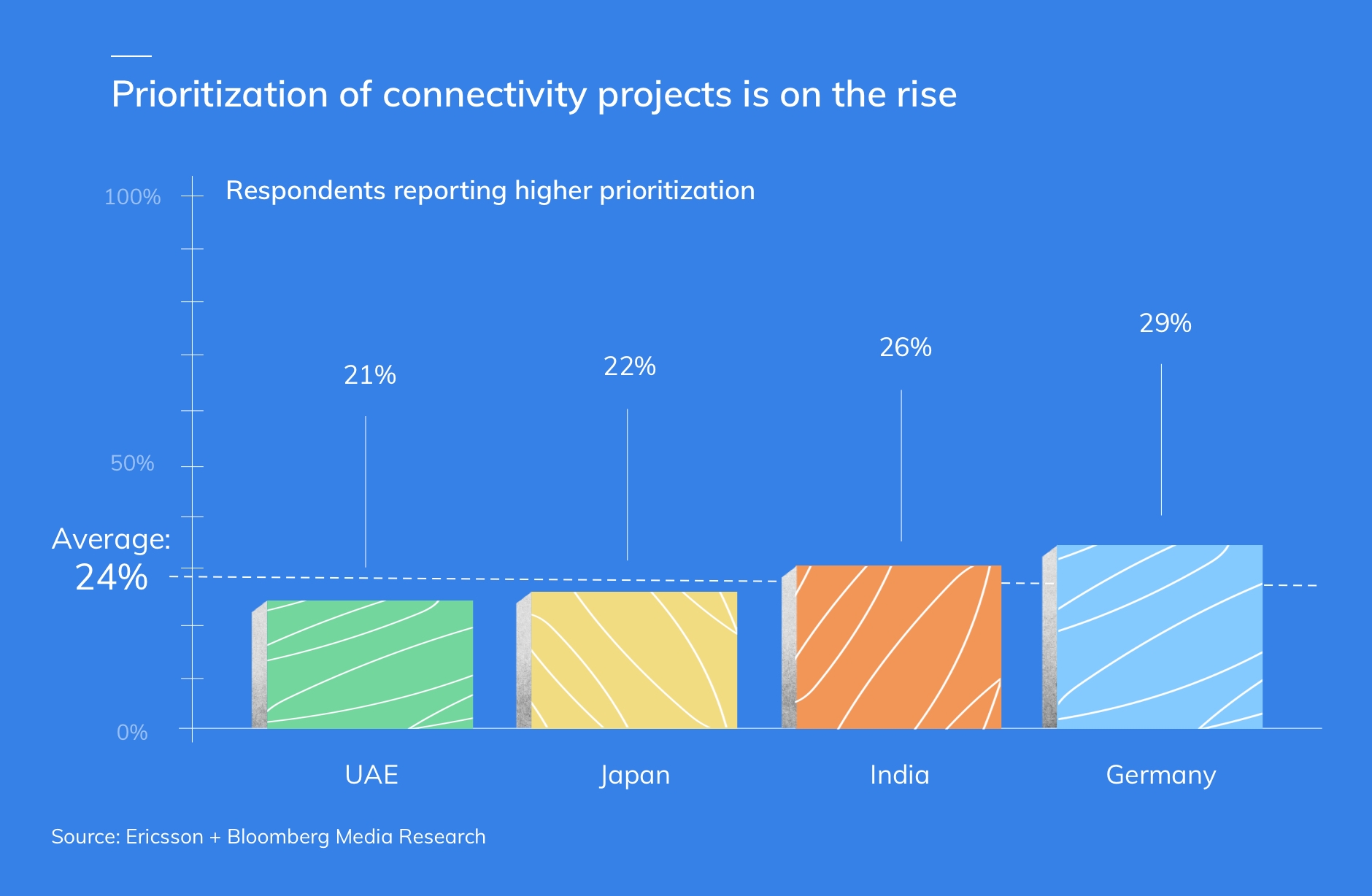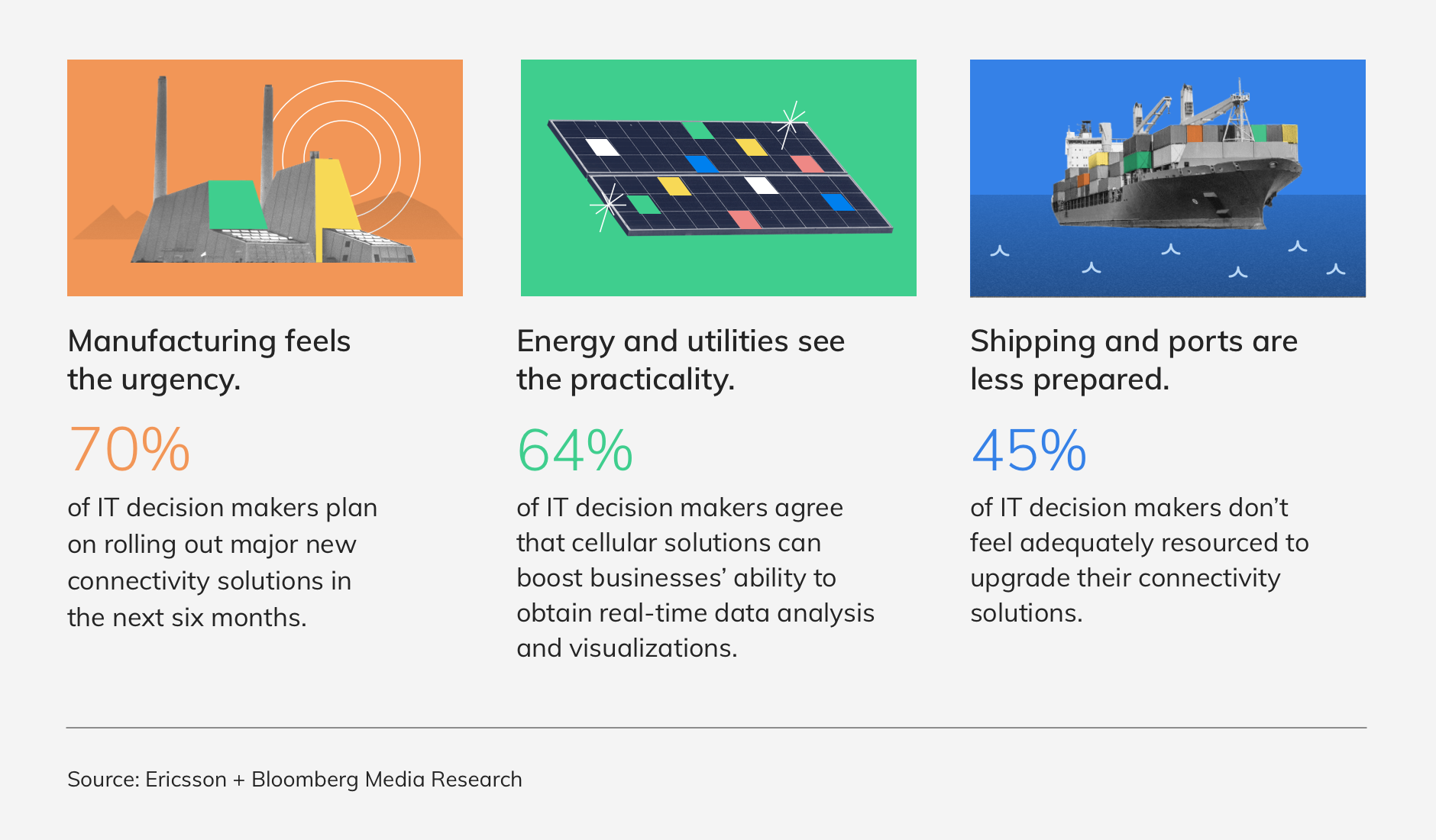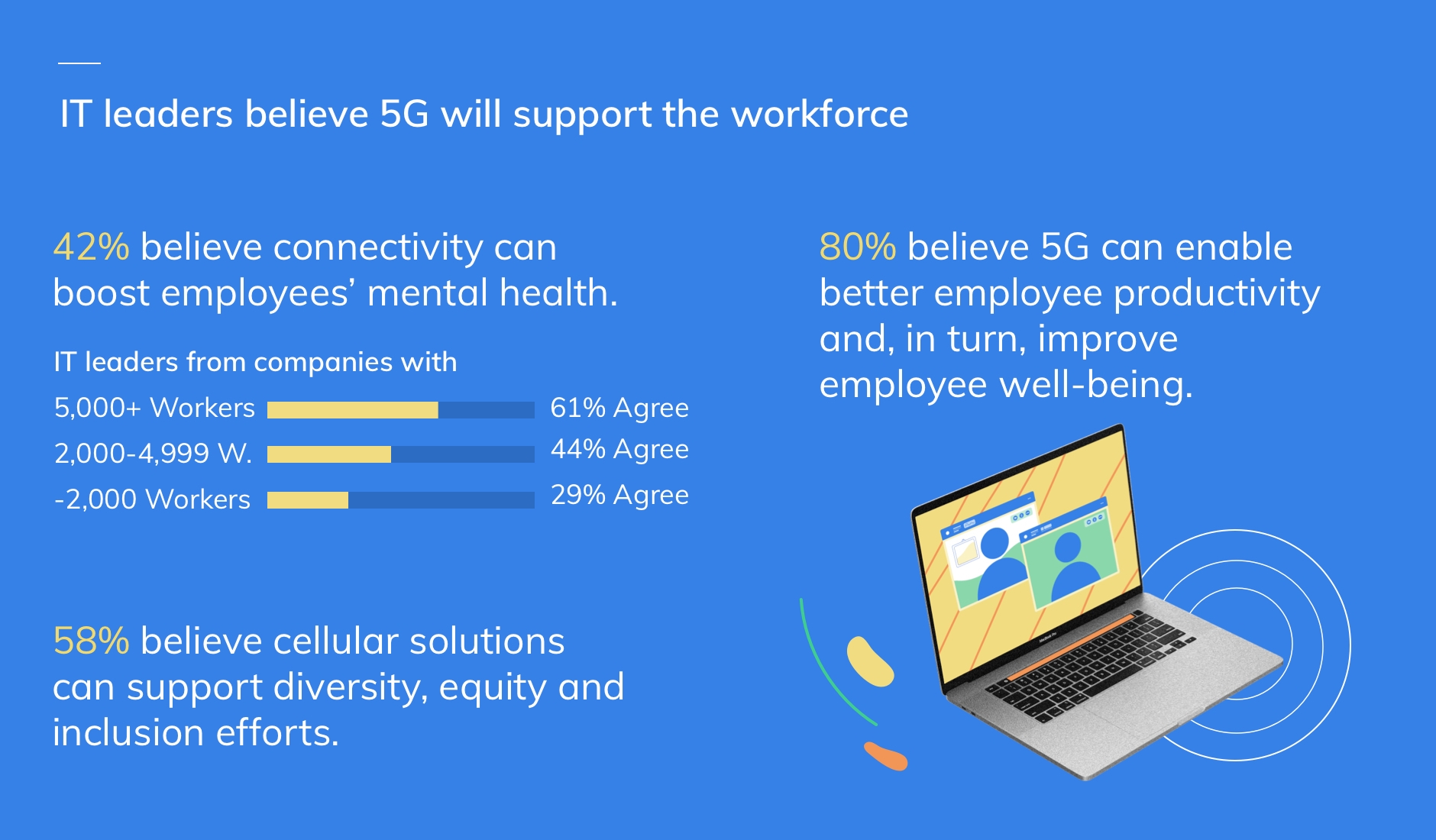Limitless Connectivity Is the Next Competitive Edge
A new global survey of IT leaders reveals a surge in companies’ connectivity ambitions and how 5G is poised to redefine business.
Companies that made major digital pivots over the last three years know the advantages of removing constraints from their connectivity—from restaurants that adopted curbside service to office-based enterprises that freed their employees to work from anywhere.
But, thanks to the reach and performance now available with 5G, more and more companies are seeing what’s possible when connectivity is effectively limitless, says Ericsson’s George Mulhern.
“I see it as completing the picture,” Mulhern says of 5G. Mulhern leads Ericsson Enterprise Wireless Solutions, a new business division created to enable enterprise customers to get the most out of their cellular technology.
This gives him an informed perspective on the ways that 5G closes gaps and expands horizons for sectors in which connected devices must work with precision, like manufacturing and health care; sectors that can lift or sink the global supply chain, like shipping and transportation; and those where optimizations advance progress toward decarbonization goals, like the energy and utilities sectors.
Enterprise has mostly known a wired world, and mobility has largely been achieved via smartphones, and inside buildings through a Wi-Fi connection. Now, he explains, cellular technology is extending that mobility in a more macro way by breaking the mold beyond a building’s walls.
Connectivity is proving its long-term value
Many of the industries that are now pushing connectivity’s limits in the most innovative ways are the same ones that first adopted advanced connectivity solutions as a stopgap in the face of major change, according to Mulhern—none more so than the health care field, which established pop-up networks during the pandemic to power hastily assembled clinics and testing sites.
The shift meant that physicians needed only to plug devices into a power source; their SIM cards did the rest by connecting to a cellular network and pulling configurations and security infrastructure from the cloud to ready programs within minutes.
That, Mulhern says, is how limitless connectivity should operate. Sectors that rely on low latency to get the most out of robotics, artificial intelligence and an increasingly distributed workforce are feeling the most urgency to tap into this agility.
A new survey of 400 senior IT decision-makers across Japan, Germany, India and the United Arab Emirates, conducted by Bloomberg Media Studios in partnership with Ericsson, reveals that 67% of their companies will undertake major new connectivity projects in the next six months, and that prioritization of connectivity is on the rise.

Emerging technologies raise the stakes for connectivity
The new survey focused on IT professionals in the manufacturing, automotive, energy/utilities and shipping sectors—industries that Mulhern says have much to gain from expanding the role of cellular tools in their operations, such as powering automation.
These are also industries that can make an outsized impact on global sustainability goals by taking full advantage of cellular connectivity’s capabilities for smarter energy use.
The survey also reveals a critical mass of connectivity ambition across sectors in keeping with modern business trajectories, says Mulhern. Every industry and every enterprise are now going through digital transformation, and all eyes are on machine learning and artificial intelligence to deliver new services and new capabilities to increase operational efficiency.
“Every company is becoming an IT company.”

Even as most respondents plan more robust integration of 5G capabilities, that leaves nearly a third of respondents without a pending plan. These IT leaders represent organizations that they say are under-resourced for connectivity upgrades. And size matters in these efforts: Companies with 5,000 or more employees are nearly twice as likely to prioritize new connectivity initiatives than those with 2,000 or fewer workers.
“For providers, frankly, simplicity is one of the most powerful value propositions today,” Mulhern says. “Anything you can do to simplify life for IT professionals makes a difference.”
The world’s most vital industries approach connectivity differently
The manufacturing, energy and shipping sectors have set their sights on automation—a data-intensive and speed-reliant process requiring limitless connectivity, constellations of connected devices and often the security of a private 5G network. But some sectors are moving faster than others, Mulhern explains, and the survey results reflect these discrepancies.

Each of these industries can benefit from the operational advantages of increased connection speed and agility—from reconfiguring a robotic manufacturing line more quickly by going wireless, to deploying digital twins to monitor power grid vulnerabilities, to guiding autonomous vehicles via IoT sensors to boost supply chain efficiency.
5G can help a company’s triple bottom line
The survey’s snapshot of global IT perspectives places 5G at the center of new initiatives around companies’ environmental and social responsibilities, highlighting the role connectivity can play in boosting the so-called “triple bottom line” of profits, people and planet.
Nearly a quarter of respondents—all of whom were involved in their companies’ sustainability efforts—believe cellular solutions can support this work, while nearly half say these tools are helpful in minimizing waste. Forty percent believe 5G can empower organizations to reduce energy consumption.
But 5G’s sustainability support isn’t limited to efforts to go green, Mulhern explains. Senior IT leaders surveyed see connectivity improving the worker experience, too, by creating the flexibility for people to work when and where they are most productive—all while reducing their carbon footprint. Meanwhile, forward-thinking companies are using ongoing digital-transformation efforts as opportunities to upskill their workers and put them on engaging growth trajectories.
The research also shows a growing appreciation for the role that a company’s collaborative technologies can play in diversifying its workforce. Mulhern cites companies located in less diverse communities that, by adopting a distributed-workforce model, can strengthen their teams by hiring talent located anywhere.

Mulhern sees these findings as powerful reminders that the end goal of removing limits from connectivity is to empower people to do their best work.
“It’s clear the IT community is fully embracing the future of connectivity, and that’s what we hope for among the professionals on the front lines of the work,” he says. “But what’s even more encouraging is the way these insights place humans at the center of the conversation. At the end of the day, that’s who connectivity is designed for.”
